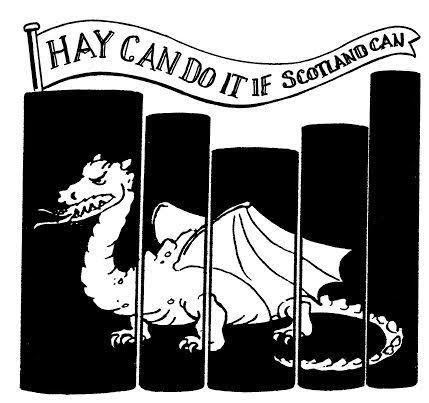Monday 10 April 2017
Coach Trip to Lichfield
Susan wanted company when she went on a coach trip last week, so I joined her for a day out in Lichfield.
It's a charming town, and the main reason for the visit was the Doctor Johnson Museum. The coach was full, so we split into two groups for the guided tour.
We were in the first group, and we just had time for lunch at a lovely old pub called The Scales - all oak beams and three good real ales. I had the spicy bean burger and Susan had the bacon and cheese burger, which came with chips served in a mini deep fat fryer. Some people dislike quirky serving methods like this, but I quite liked this one.
Thus fortified, we were ready for the tour - the house was built by Samuel Johnson's father, Michael, who was a master bookbinder, and also had a book shop, and he decided he wanted eleven bedrooms! I think he wanted the tallest house on the square. Down in the basement was the kitchen, where the family spent most of their time (it would be the warmest room, after all), and on the ground floor was the bookshop, now the gift shop and charity bookshop, and Michael's work room where he did his bookbinding.
Upstairs, the biggest bedroom was where Samuel was born - his mother was quite elderly for a first pregnancy, and it was a difficult birth, which left him with a life long limp, partially sighted and partially deaf. However, she later gave birth to another boy, Nathaniel, about whom very little was known - he died at the age of 27 and left very little in documented evidence apart from a letter where he is apologising to his mother for his drunken behaviour!
Samuel went to the local grammar school, where he was saved from beatings for late arrival by his friends carrying him to school on their backs! In return, he did their homework for them.
The family were not wealthy enough to send Samuel to university, but he did manage to spend 18 months studying at the cheapest college, with a legacy of £40.
After that, he became a jobbing writer and went to London. For a while he and his wife Tetty ran a school, which was not successful, though one of the pupils was David Garrick (a Hereford lad) who became a great friend, and the leading actor of his age.
As we learned more about his life, we climbed higher up the house.
The thing that Samuel Johnson is most famous for is his dictionary, the first of its kind - it took him 10 years to complete, with various problems including a patron who didn't provide the money he had promised. However, on the strength of his work, Samuel was awarded an honorary doctorate from Dublin University, and was thereafter known as Doctor Johnson.
By this time, he had met his biographer and friend, Boswell.
Meanwhile back in Lichfield, his father had died, and his mother and a cousin who acted as maidservant ran the bookshop for thirty years.
The guide who took us round had done some research on the women of the family, and also on some of the words in the dictionary. She said she had been surprised to find the word "barbeque" included, with the meaning "cooking a whole hog in the West Indian style". One word which has changed its meaning is "nice". In Johnson's day, it meant "exact" rather than "pleasant".
When Tetty died, Samuel fell into a deep depression, so a friend decided to give him a little black slave boy as a present "rather like giving someone a puppy", the guide said. Samuel was vehemently against the slave trade, so he freed the boy, adopted him as his son, and educated him. This was Frances Barber, who was with him when he died, along with his wife, a white girl with blonde hair and blue eyes, called Elizabeth.
Recently a family in Stoke-on-Trent were doing some family history research, and discovered that they were descendants of Frank and Elizabeth - which explained the family traits of either having curly hair and brown eyes or blonde hair and blue eyes! Now they get invited to all the events at the museum.
I'd known a bit about the life of Doctor Johnson when I went in, but I found the tour, and the details about the rest of his family and the people he surrounded himself with, fascinating.
Then there was time to have a look at the cathedral, which dates back to St Chad in Saxon times (the Lichfield Angel and the Lichfield Gospels were sadly not accessible when we were there).
The other important time in the cathedral's history was the Civil War, when the cathedral was besieged, and a marksman in the tower managed to shoot the leader of the besiegers. I stood on Dam Street not far from where the soldier fell, and was impressed at the accurate shooting!
After that, disaster struck, and the cathedral needed to be rebuilt - Charles II, whose statue is at the top of the post, gave money towards the work.
Lichfield Cathedral also has the most gorgeous Flemish stained glass, and the tomb of Bishop Selwyn, who was Bishop of New Zealand after he was Bishop of Lichfield and Coventry.
On the way back to the coach, we looked at the plaques on the church wall on the square where a market was being held - and found that four people were burned at the stake in that square over the years, including one woman, and the last person to be burned at the stake in England, in 1612.
All in all, it was a fascinating day out!
Subscribe to:
Post Comments (Atom)



1 comment:
And a fascinating article . Thank you.
Post a Comment